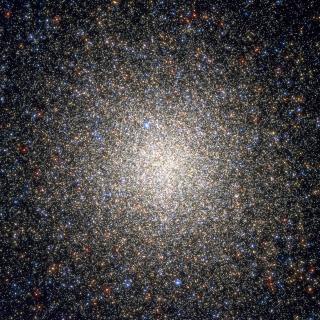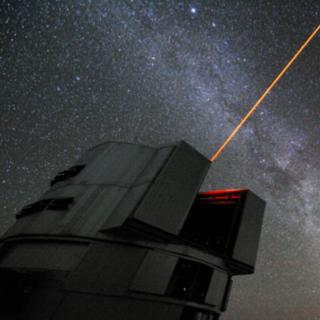Bibcode
Stetson, P. B.; Carrera, R.; Hidalgo, S. L.; Aparicio, A.; Meschin, I.; Gallart, C.; Monelli, M.
Referencia bibliográfica
Monthly Notices of the Royal Astronomical Society, Volume 438, Issue 2, p.1067-1080
Fecha de publicación:
2
2014
Número de citas
65
Número de citas referidas
62
Descripción
We study the evolution of three fields in the outer Large Magellanic
Cloud (LMC) disc (Rgc = 3.5-6.2 kpc). Their star formation
history indicates a stellar population gradient such that younger
stellar populations are more centrally concentrated. We identify two
main star-forming epochs, separated by a period of lower activity
between ≃7 and ≃4 Gyr ago. Their relative importance varies
from a similar amount of stars formed in the two epochs in the innermost
field to only 40 per cent of the stars formed in the more recent epoch
in the outermost field. The young star-forming epoch continues to the
present time in the innermost field, but lasted only till ≃0.8 and
1.3 Gyr ago at Rgc = 5.5° and 7.7°, respectively.
This gradient is correlated with the measured H I column density and
implies an outside-in quenching of the star formation, possibly related
to a variation of the size of the H I disc. This could either result
from gas depletion due to star formation or ram-pressure stripping, or
from to the compression of the gas disc as ram pressure from the Milky
Way halo acted on the LMC interstellar medium. The latter two situations
may have occurred when the LMC first approached the Milky Way.
Proyectos relacionados

Vía Láctea y galaxias cercanas
El objetivo general del Proyecto es el estudio de la estructura, historia evolutiva y proceso de formación de galaxias a través de sus poblaciones estelares resueltas, tanto a partir de fotometría como espectroscopia. El proyecto puede dividirse en cuatro líneas principales: I. Historia de formación estelar en el Grupo Local. El objetivo de esta
Martín
López Corredoira

Evolución Galáctica en el Grupo Local
La formación y evolución de galaxias es un problema fundamental en Astrofísica. Su estudio requiere “viajar atrás en el tiempo”, para lo cual hay dos enfoques complementarios. El mas extendido consiste en analizar las propiedades de las galaxias a diferentes distancias cosmológicas. Nuestro equipo se concentra en el otro enfoque, denominado
Emma
Fernández Alvar